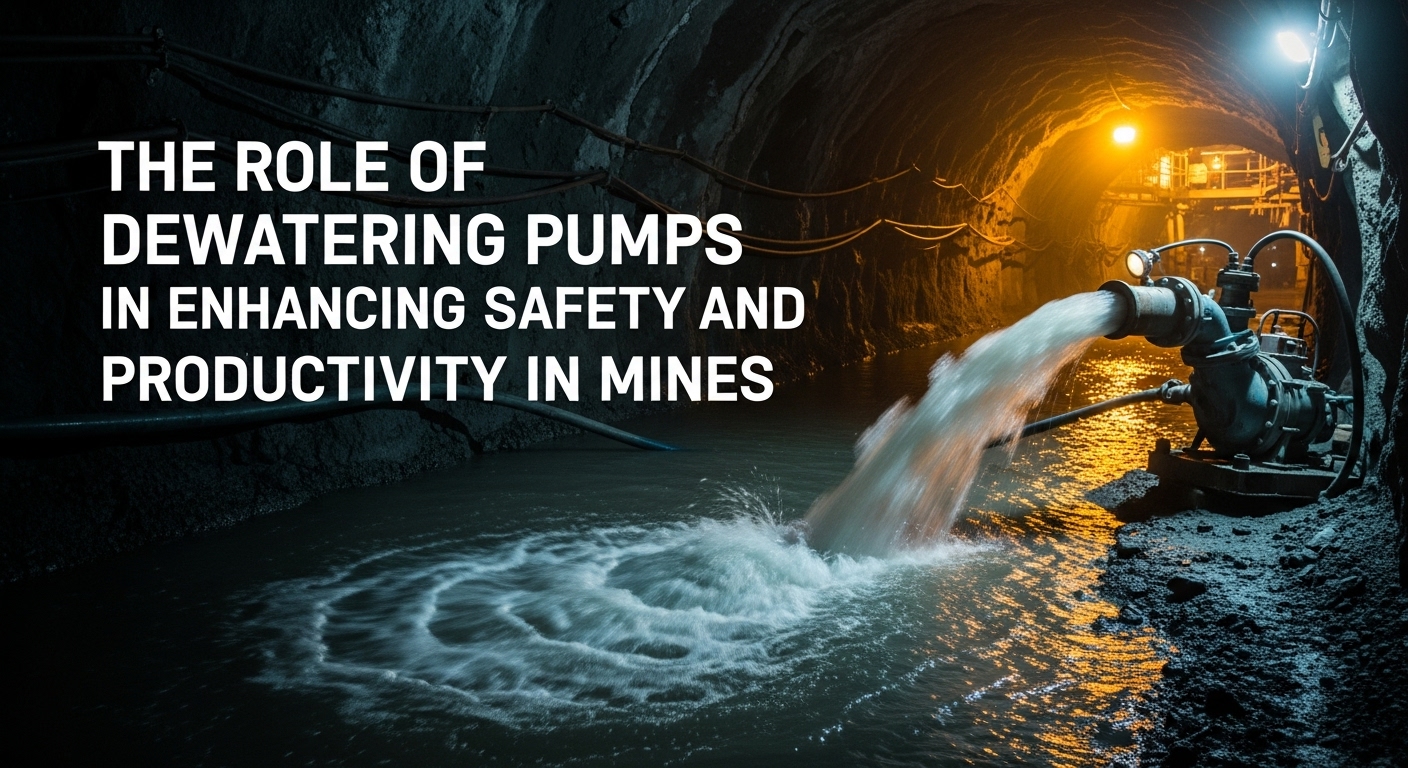Effective water management is a critical requirement in mining operations, directly impacting worker safety, equipment protection, and overall productivity. Excess water ingress can disrupt mining activities, damage infrastructure, and increase operational risks. This is why dewatering pumps are an essential component of modern mining sites, helping maintain dry, stable, and safe working conditions.
In this guide, we explore the role of dewatering pumps in mining, the different pump types used, their benefits, recent technological advancements, and key factors to consider when selecting the right dewatering solution for mining environments.
Dewatering Pumps in Mining: Importance, Types, and Best Practices
Understanding Dewatering Pumps in Mining
Dewatering pumps are engineered to remove groundwater, surface water, and wastewater from mining sites. These pumps help prevent flooding, ensure uninterrupted operations, and maintain safe access to tunnels, shafts, and excavation zones.
Types of Dewatering Pumps Used in Mining
Submersible Pump 1 HP
Submersible pump 1 HP units operate fully submerged and are ideal for mines with moderate water inflow. They handle clean water, slightly contaminated water, sludge, and light sewage efficiently.
Drainage Pump
Drainage pumps are used to remove accumulated surface water from pits, low-lying areas, and access roads, preventing waterlogging and work stoppages.
Sludge Pump
Sludge pumps are designed for thick, viscous fluids containing high concentrations of solids. They are essential in mining environments where mud, tailings, and sediment-rich water are common.
Sewage Sludge Pump
Sewage sludge pumps manage wastewater generated from mining camps and facilities, ensuring hygienic conditions and regulatory compliance.
Cutter Pump
Cutter pumps feature built-in cutting mechanisms that shred debris and fibrous solids, making them ideal for mining water contaminated with waste, rocks, and organic matter.
Key Benefits of Dewatering Pumps in Mining
Flood Prevention
Dewatering pumps prevent water accumulation in shafts and tunnels, reducing the risk of flooding and ensuring uninterrupted mining operations.
Protection of Mining Infrastructure
By controlling water levels, dewatering pumps protect tunnels, foundations, and heavy machinery from corrosion, erosion, and structural damage.
Improved Operational Efficiency
Efficient dewatering minimizes downtime caused by water ingress, allowing mining activities to continue safely and productively.
Environmental and Regulatory Compliance
Proper water removal and wastewater handling help mining operations comply with environmental regulations and reduce their ecological impact.
Technological Advancements in Dewatering Pumps
Automated Dewatering Systems
Automation enables real-time monitoring and control of pump operations, allowing performance adjustments based on changing water levels.
Energy-Efficient Pump Designs
Modern dewatering pumps are designed to reduce power consumption, lowering operational costs while supporting sustainability goals.
Durable Materials and Heavy-Duty Construction
Advanced materials improve resistance to abrasion, corrosion, and extreme operating conditions commonly found in mining environments.
Smart Pumps with IoT Integration
Smart pumps equipped with sensors and data analytics provide predictive maintenance alerts, reducing unplanned downtime and extending pump lifespan.
How to Choose the Right Dewatering Pump for Mining
Mine Size and Water Volume
Larger mines with higher water inflow require high-capacity pumps or multiple pump installations to maintain effective dewatering.
Type of Water and Contaminants
Select pumps based on water quality. A submersible sewage pump is suitable for wastewater with solids, while a submersible dewatering pump works best for clean or lightly contaminated water.
Environmental and Site Conditions
Temperature extremes, abrasive materials, and corrosive substances should guide pump material and design selection.
Power Availability
Ensure pump power ratings match available electrical infrastructure. Energy-efficient options like submersible pump 1 HP models balance performance and power usage.
Maintenance and Support
Pumps with easy access to spare parts and service support help maintain continuous operations and reduce lifecycle costs.
Maintenance and Safety Best Practices
Conclusion
Dewatering pumps are indispensable in mining operations, ensuring safety, protecting infrastructure, and supporting efficient production. By effectively managing water levels, these pumps reduce operational risks and help mining companies meet environmental and regulatory requirements.
Selecting the right dewatering pump based on mine conditions, water characteristics, and operational demands ensures long-term performance and reliability. With advancements in automation, energy efficiency, and smart monitoring, modern dewatering pumps continue to enhance the safety and productivity of mining environments.
